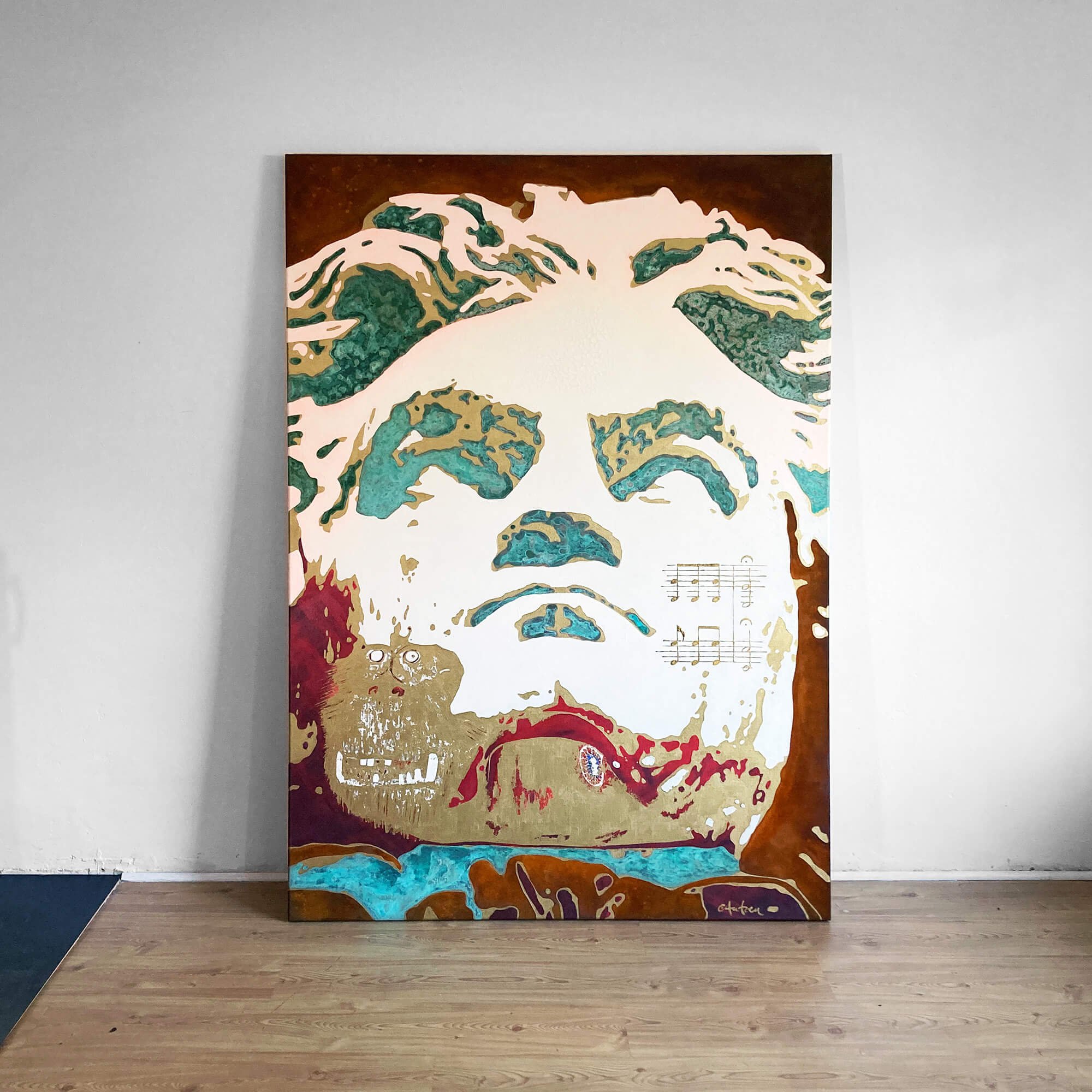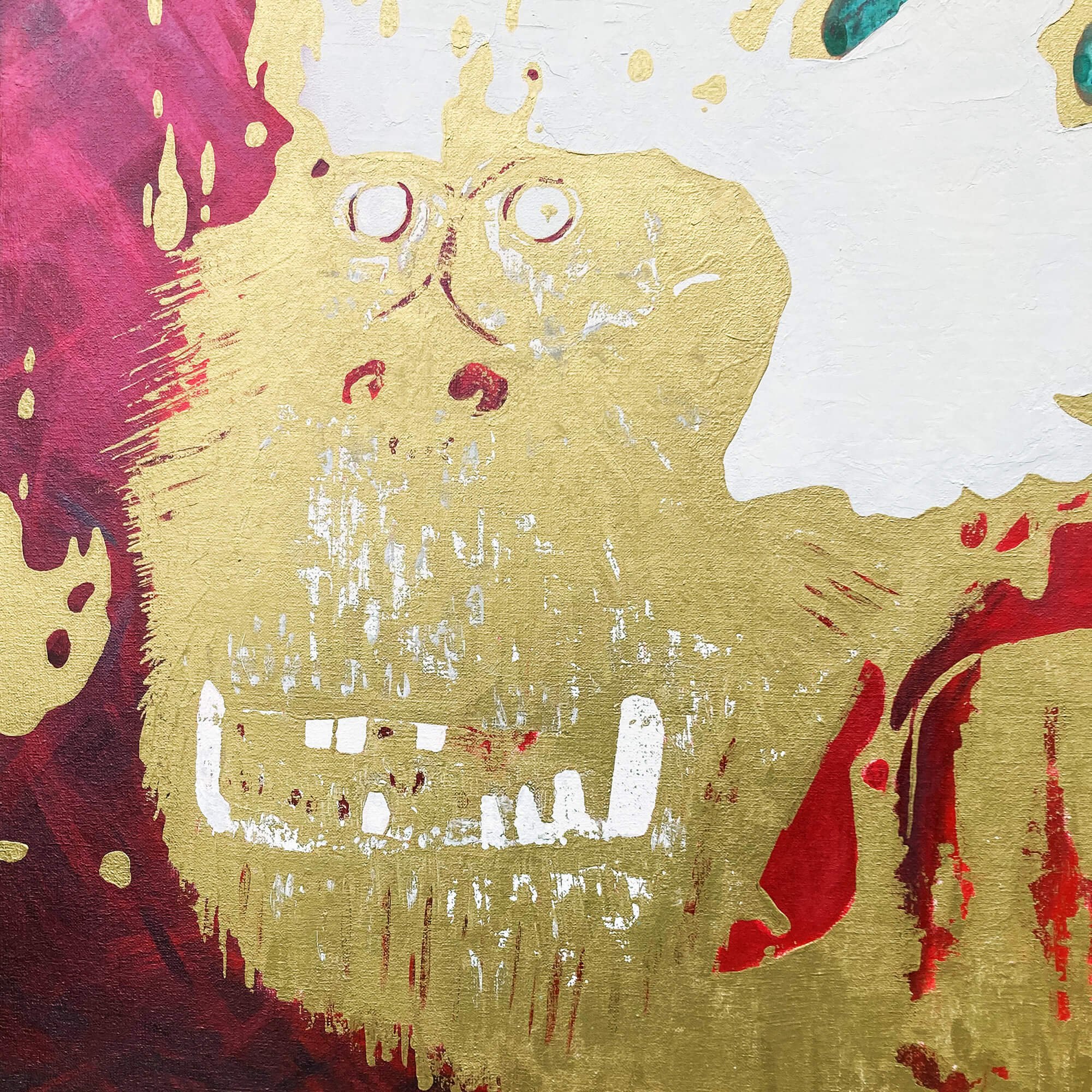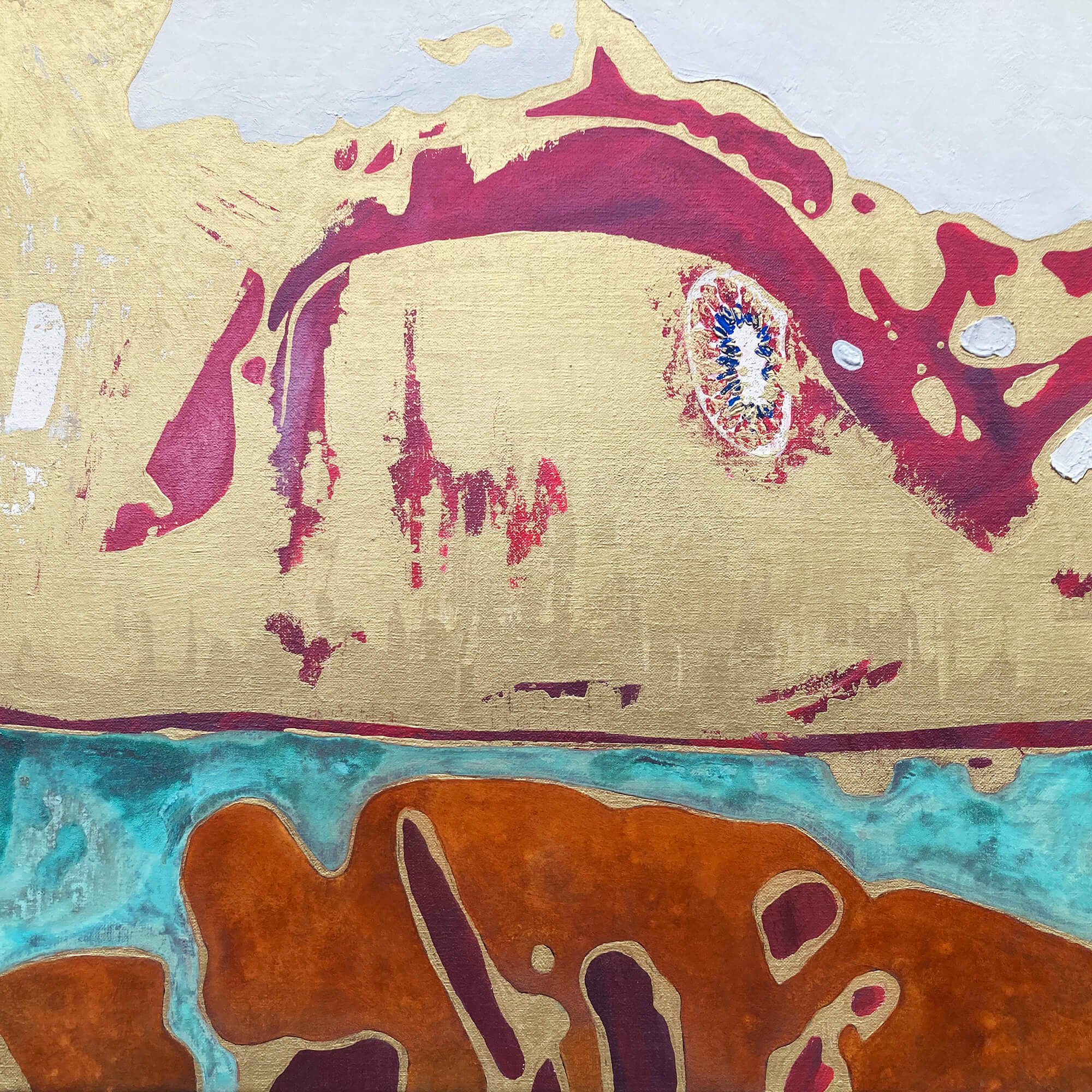Per Aspera ad Astra 2024
Homage to Ludwig van Beethoven
Acrylic on canvas
24 carat fine 999/gold, rust and patina colours
130 x 195 cm / 51 x 77 in
No. #202402
In 1805, Napoleon Bonaparte reached the height of his power after defeating the coalition of Russia and Austria at the Battle of Austerlitz. This period was characterised by Napoleon's reforms and the spread of French ideas, which also influenced Ludwig van Beethoven.
Beethoven, who was initially impressed by Napoleon as a freedom fighter, incorporated the revolutionary ideals into his music, particularly in his 5th Symphony. This ‘Symphony of Fate’, symbolises the struggle against fate and the triumph of the human spirit. The impact of the 5th Symphony spanned generations and inspired numerous artists, including Gustav Klimt.
Klimt's Beethoven Frieze, created for the Vienna Secession in 1902, interprets Beethoven's music visually and thematises the struggle against hostile forces. The ape-like giant Typhoeus in Beethoven's frieze symbolises the overwhelming and threatening forces that man must overcome in order to find true happiness.




